Transition Machine
Multichannel Video Installation [2010]
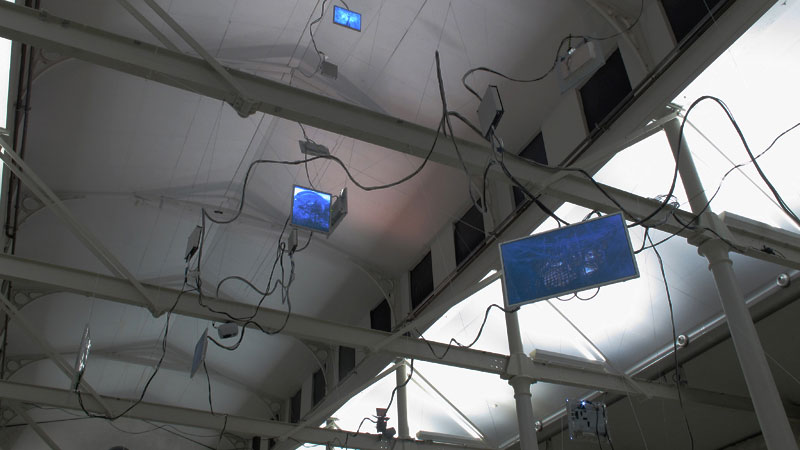
Multiple dismantled video displays, computers, and loudspeakers are suspended from the ceiling in an organic arrangement. Stills from abandoned industrial sites, close-ups of textures, and wide, empty landscapes slowly merge and transform, creating an endless stream of perfectly believable realities and obscure contradictions of geometry, perspective, shape, and texture.
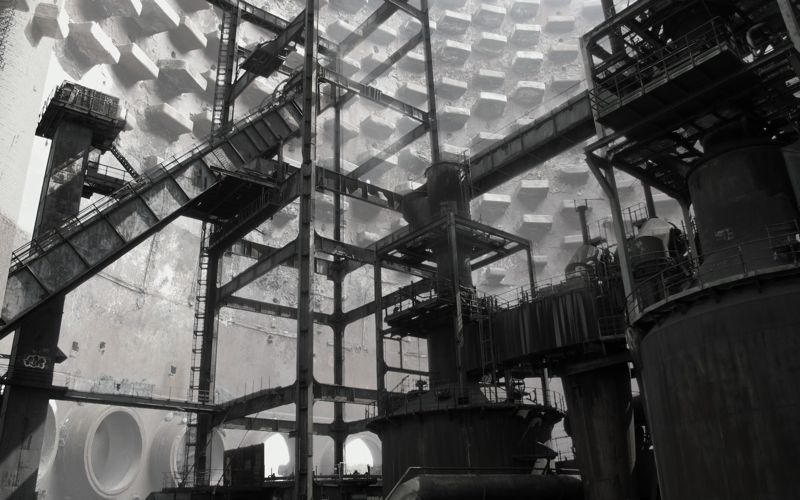
The work uses simple video keying techniques — long before AI made digital dreams a commodity — and with a much smaller ecological footprint, entirely based on source material created by the artist. A soundscape sometimes matches the visual states, sometimes contrasts them.
Transition I
Many of the photos used for Transition Machine were taken at a former iron blast furnace in Duisburg, Germany. Mining and the steel industry were the most important economic factors in this area for centuries. Now this industry is gone. The giant steel constructions are becoming rusty and falling apart. Some have been transformed into cultural venues, concert halls, and exhibition spaces. Most have been torn down.
Transition II
My mother used to work at a photographic lab when I was young. I still remember the magic of the darkroom: very soft orange-red light, the smell of chemistry, and structures emerging out of nothing in a slow, magical process. I found myself staring at the photo paper, fascinated by the transition from nothing to structure.
Transition III
I observe the shadow the sun paints on a wall and watch it slowly change. It seems static, but obviously it is not. I like slow repetition.
Light
Scattering reflections on water, rays of light piercing a room through a small hole in the ceiling, the wonders of cinema, of the photographic image, of more than a million microscopic glowing dots in red, blue, and green on a computer display.
Process I
I set up a process. I know how long it will take to fade from one image to another. I want several screens to behave slightly differently in this regard. That’s simple. I add some random variation, and my machine becomes alive.

Process II
There is a limited number of source images, but I don’t know when each will appear or on which screen. I define a probability and observe what emerges. I will never be able to experience all possible combinations, and no one else will either. I like this. The machine can still surprise me.
Process III
At regular intervals, the machine takes snapshots of the currently displayed images. Most likely, these snapshots show transitional states between two photos. The snapshots are saved and become part of the pool of possible images. The longer the installation runs, the more likely it becomes that layers of already layered images appear, increasing visual complexity. But there is a technical limit. Each layer means a loss of information. Layers upon layers will begin to look bad and noisy—some form of digital decay. It reminds me of the slow erosion of old industrial machinery.
Sound
The sound is entirely based on recordings I made at various abandoned industrial sites: dripping water, odd noises from still-intact heating systems, metal on metal. I created a set of overlapping long loops, never truly repeating, diffused through multiple speakers. The sound is meant to act like a perfume, an atmosphere. It is not intended to be music, just a carefully crafted background.
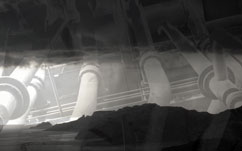
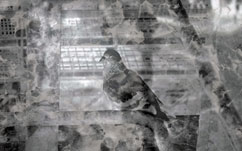
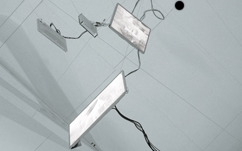
Time
No start, no end. Installations should not demand a specific attention span or a defined entry point from the visitor. Every moment is a good moment. No one will be able to experience all possible transitions.
Technology
I like working with computers. I can define my own structures, and the limit is my imagination and my technical skills. Both can be improved if I work hard enough, and there is always something new to learn. I finish one work and immediately have ideas for ten new ones. When using a computer to create art, the office machine disappears, and what remains is the pure joy of working with a potentially huge, complex structure—or a set of them, communicating with each other.
For this installation, I programmed a server that tells all the other computers what to do. With a single click of the mouse, all screens change. Each time this happens, a strange feeling of power overcomes me. How does it feel to operate the control panel of a huge steel factory?




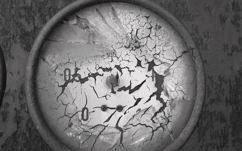
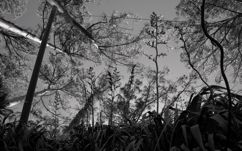
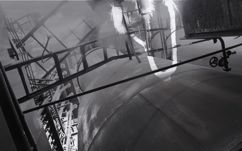
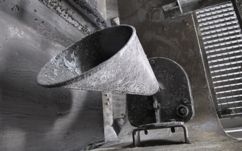
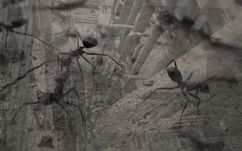
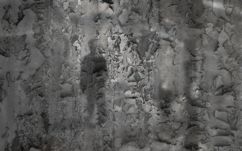
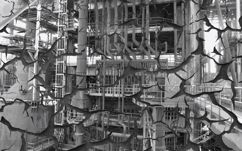
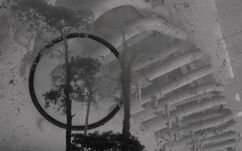

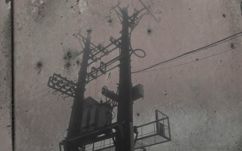
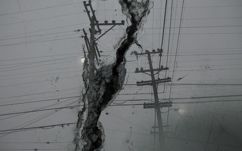
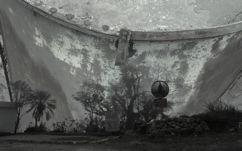
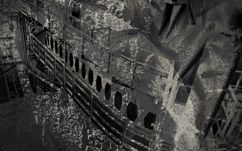

Exhibition
Transition Machine was shown as a solo exhibition at Färgfabriken, Stockholm, Sweden. October 30, 2010 – January 9, 2011.
Transition Machine is based on a real-time image processing software system that I originally developed for the installation 'Traffic' and further refined for this work.
Another derivation from this concept / software drives the image generation for the 'Landscape' series of prints.